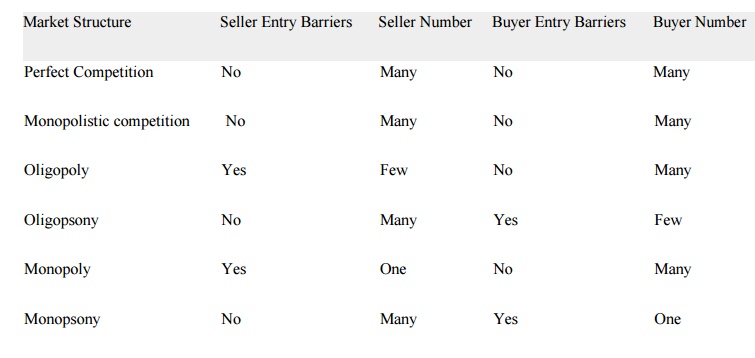Chapter: Engineering Economics and Financial Accounting : Pricing
Pricing Under Different Objectives and Different Market Structures
PRICING UNDER DIFFERENT
OBJECTIVES AND DIFFERENT MARKET STRUCTURES
Perfect Competition
Economists
in general recognize four major types of market structures (plus a larger
number of subtypes):
• Perfect
Competition
• Monopoly
• Oligopoly
• Monopolistic
competition
Perfect Competition
where “p”
stands for perfect, pure or price, whichever you may like.
A
p-competitive structure is defined by four characteristics. For an industry to
have a pcompetitive structure, it must have all four of these characteristics,
which are as follows:
• Many
buyers and sellers
• A
homogenous product
• Sufficient
knowledge
• Free
entry
These all
are characteristics that favor price competition.
Many Buyers and Sellers
The idea
is that the sellers and buyers are small relative to the size of the market, so
that no one of them can "fix the price." If there are "many
small sellers," it makes it much harder for any seller or group of sellers
to "rig the price." Similarly, if there are "many small buyers,"
there is little opportunity for buyers to "rig the price" in their
own favor.
Homogeneity
If the
product (or service) of one seller differed significantly from that of another
seller, then each seller would probably be able to retain at least some of the
customers, even at a very high price. These would be the customers who just
prefer this seller's product (or service) to that of someone else. The
assumption of homogenous products serves to rule that out.
Knowledge
Some
versions of the "perfectly competitive" structure include
"perfect knowledge" as one of its characteristics. But, of course,
"perfect knowledge" never exists in reality. Perfect information is
little less clear than the other assumptions-- we can hardly assume that people
know everything there is to know.
Free Entry
Free
entry means that new companies can set up in business to compete with
established companies whenever the new competitors feel that the profits are
high enough to justify the investment. This is, first and foremost, a legal
condition. That is, in a "perfectly competitive" market, there are no
government restrictions on the entry of new competition.
Let us
sum up the four characteristics of p-competition:
1. Many
small sellers-- The more the sellers, the more substitutes the consumer has.
2. Homogenous
products-- When the product is homogenous, then
the substitutes are "perfect substitutes."
3. Sufficient
knowledge-- When customers know the prices offered by other sellers, they will
be better able to switch, increasing elasticity further.
4. Free
entry-- In the long run, companies may even enter the market to provide still
more substitutes.
Other Market Forms
The other
three market structure models can be defined in terms of the ways in which they
deviate from the characteristics of p-competition.
In a
“monopoly,” there is just one seller of a good or service for which there is no
close substitute.
In an
“oligopoly,” there are two or more, but only a few firms.
In
“monopolistic competition,” the products are not homogenous but are
"differentiated."
We do not
have a standard model for "insufficient knowledge," but, at least in
some cases, that seems to work similarly to "product
differentiation."

The correct sequence of the market structure from most to least competitive is perfect competition, imperfect competition,oligopoly, and pure monopoly.
The main
criteria by which one can distinguish between different market structures are:
the number and size of producers and consumers in the market, the type of goods
and services being traded, and the degree to which information can flow freely.
Related Topics